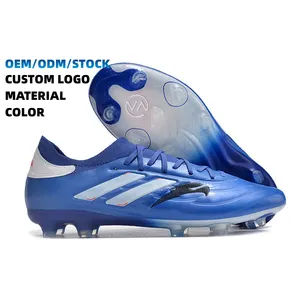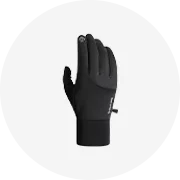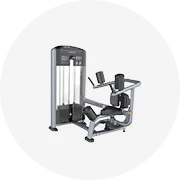Phổ biến trong ngành của bạn

Enerforce 12V pin lithium 24V 36V 48V 60V 72V 10AH 20Ah 30Ah 60Ah 80Ah pin Li-ion cho E xe đạp và E Xe tay ga
12,99 US$ - 15,99 US$
Đơn hàng tối thiểu: 2 Bộ


Dtp 10s2p 36V 4.4AH 158.4wh 48V 18650 Ebike Xe đạp điện pin Lithium ion 36V E Scooter litokola Pin
35,00 US$ - 40,00 US$
Đơn hàng tối thiểu: 5 Cái
Vận chuyển mỗi chiếc: 46,70 US$


Bộ Pin Li-ion DTP 7S1P 18650 Pin Hoverboard Ion Lthium 25.2V 2200MAh 2.2Ah Cho Xe Đạp Đá
Sẵn sàng vận chuyển
15,20 US$ - 18,00 US$
Đơn hàng tối thiểu: 1 Cái
Vận chuyển mỗi chiếc: 35,50 US$


Pin Accu N 60V Tùy Chỉnh 60V 26Ah 35Ah BMS Tích Hợp Cho Xe Tay Ga/Xe Gắn Máy Điện
149,00 US$ - 180,00 US$
Đơn hàng tối thiểu: 2 Cái
Vận chuyển mỗi chiếc: 220,53 US$


OEM 60V 72V 30Ah Li Ion pin lithium gói xe điện xe đạp 48V 36ah pin Lithium ion
45,00 US$ - 50,00 US$
Đơn hàng tối thiểu: 5 Cái
Vận chuyển mỗi chiếc: 151,70 US$


Tự Làm 48V 10Ah 15Ah 20Ah 25Ah 30Ah Lithium Ion Akku Trường Hợp 18650 Ebike Gói Pin Cho Xe Đạp Điện Xe Đạp Scooter 1000W 1500W
260,00 US$ - 285,00 US$
Đơn hàng tối thiểu: 1 Cái
Vận chuyển mỗi chiếc: 105,00 US$

JOYDO 18650 Lithium Pin 36V Có Thể Sạc Lại 10S Pin Gói Cho Điện Scooter E-Bike
35,00 US$ - 48,00 US$
Đơn hàng tối thiểu: 1 Cái

GEB Pin Li-ion Chu Kỳ Sâu NCR18650 Li-ion 36V 7.8Ah 18650 10S3P Cho Xe Điện 350W Bộ Pin Thay Thế Được Cho Xe Tay Ga
45,00 US$ - 50,00 US$
Đơn hàng tối thiểu: 2 Cái

Thay Thế Etwow E Scooter Pin 36V 6Ah 7.8Ah 8.7Ah 9Ah 10Ah Hidden Pin Lithium Gói
91,00 US$ - 120,00 US$
Đơn hàng tối thiểu: 2 Cái

Chất Lượng Cao 60V 12ah Lithium Electric Scooter Battery Pack
98,00 US$ - 188,00 US$
Đơn hàng tối thiểu: 1 Cái

Enerforce 18650 13s4p 36V Pin E Scooter Pin gói 48V 60V 72V OEM Công suất Li-ion pin gói
39,99 US$ - 79,69 US$
Đơn hàng tối thiểu: 50 Cái

Hoverboard Lithium Có Thể Sạc Lại Akku Pin Gói 36 v 4400 mah Pin Xe Tay Ga
12,88 US$ - 25,88 US$
Đơn hàng tối thiểu: 1 Cái
Các tìm kiếm liên quan:
ce túi pin xe điệnbộ pin xe tay ga 60vbộ pin xe tay ga 12v 20ahgói pin xe tay ga 800w48 volt xe tay ga pintúi pin xe tay ga36v 20ah e scooter pin góigói pin xe tay ga 48v 4.4ah48v lithium scooter pin gói72v scooter pin gói18650 6s2p xe điện pin góipin xe tay ga điện 24vtrường hợp xe tay ga pin2000w xe điện pin gói 60vpin xe tay ga điện

E Bike Li Ion 36V 48V 15Ah 20ah Battery Pack Với Nhật Bản Lithium Ion Battery Cell
64,80 US$
Đơn hàng tối thiểu: 1 Cái

SUNB Chu Kỳ Sâu Lifepo4 Pin 60V Pin Lithium 20ah Cho Xe Tay Ga 1000W Pin Gói Với Một Bộ Sạc
50,00 US$ - 300,00 US$
Đơn hàng tối thiểu: 1 Cái

60V 20Ah Xe máy điện xe đạp pin lithium Li ion 60V 20Ah Pin cho E xe đạp
219,00 US$ - 259,00 US$
Đơn hàng tối thiểu: 2 Cái
Vận chuyển mỗi chiếc: 300,00 US$

12V 24V 36V 48V 52V 60V 72V Scooter Xe Đạp Điện E Bike Lithium Ion Ebike Battery Pack
5,00 US$ - 36,00 US$
Đơn hàng tối thiểu: 1 Cái

Chất Lượng Cao Citycoco Pin 1000 Wát Lithium Ion 60V 12ah 20ah 30ah 40ah Li Akku Electric Scooter Battery Pack
268,00 US$ - 325,00 US$
Đơn hàng tối thiểu: 1 Gói

Pin Li-ion 12V 24V 36V 48V 60V 72V 6Ah 8AH 9Ah 10AH 20Ah 30Ah 40AH 50Ah pin lithium Ebike cho xe tay ga điện tử
55,00 US$ - 68,00 US$
Đơn hàng tối thiểu: 2 Đơn vị
Vận chuyển mỗi chiếc: 660,00 US$

Cuộc Sống Lâu Dài Có Thể Sạc Lại Li-ion 18650 Pin 2600MAh Năng Động 18650 Battery Pack Cho E-bike Mạnh Mẽ Scooter Battery Pack
Sẵn sàng vận chuyển
0,51 US$ - 1,85 US$
Đơn hàng tối thiểu: 10 Cái
Vận chuyển mỗi chiếc: 1,15 US$

Điện Scooter Battery Pack 48V 11ah Với Bms Và Sạc Ebike Li-ion Gói Pin
45,00 US$ - 123,00 US$
Đơn hàng tối thiểu: 2 Cái


18650 Li-ion giá tốt nhất có thể sạc lại pin lithium pin đen E xe đạp Pin NCM 36V DC 3kg
100,00 US$ - 110,00 US$
Đơn hàng tối thiểu: 2 Cái
Vận chuyển mỗi chiếc: 69,00 US$

2023 nóng bán điện Scooter Pin gói gotion thương hiệu di động Pin Lithium Ion 60V 30Ah Pin
196,00 US$ - 210,00 US$
Đơn hàng tối thiểu: 2 Cái
Vận chuyển mỗi chiếc: 42,78 US$

48V 20ah Battery Pack 15Ah 20Ah Phía Sau Giá E-bike Pin Lithium Cho 1000 Wát 1500 Wát Xe Đạp Điện Scooter Lưu Trữ Ngân Hàng Điện
Sẵn sàng vận chuyển
100,00 US$ - 210,00 US$
Đơn hàng tối thiểu: 2 Bộ
Vận chuyển mỗi chiếc: 230,00 US$

Pin Sạc OED Lion 36V 17,5ah 630Wh Xe Đạp Điện E Dành Cho Xe Đạp Điện Có Bộ Sạc
52,00 US$ - 154,00 US$
Đơn hàng tối thiểu: 1 Cái

48V 10ah LiFePO4 Lithium E Scooter Pin 48V 40Ah Li-ion Tam Giác Pin Gói Xe Đạp Điện Pin
80,00 US$ - 200,00 US$
Đơn hàng tối thiểu: 1 Đơn vị

Xe Đạp Điện Có Thể Sạc Lại Pin Lithium 36V 6ah 9ah 12ah 14ah 18ah Cho Xe Đạp Điện
149,00 US$
Đơn hàng tối thiểu: 1 Gói

Bộ Pin Xe Đạp E, Bộ Pin Xe Đạp 36 Volt E, Bộ Pin 36 V Cho Xe Đạp E
129,00 US$ - 179,00 US$
Đơn hàng tối thiểu: 1 Cái

Có Thể Thu Lại 48V 60V 40AH 50Ah 100Ah Lifepo4 Lithium/LFP Battery Pack Cho Xe Tay Ga Lưu Trữ Năng Lượng Mặt Trời
529,42 US$ - 588,54 US$
Đơn hàng tối thiểu: 1 Gói

Hải Quan Chất Lượng Cao 10S4P Mạnh Mẽ 36V 13ah Pin Lithium Cho 250 Wát 300 Wát 500 Wát E Scooter
145,00 US$ - 175,00 US$
Đơn hàng tối thiểu: 1 Cái

Ốp Akku Lithium Ion Akku 48V 10ah 15ah 20ah 25ah 30ah Tự Làm Bộ Pin 18650 Ebike Dành Cho Xe Đạp Điện Xe Đạp Xe Tay Ga 1000W 1500W
135,00 US$
Đơn hàng tối thiểu: 2 Cái
Vận chuyển mỗi chiếc: 136,63 US$

74V Có Thể Sạc Lại Pin 144 Volt Lithium Gói 18650 10S2P 36V 4400Mah Ion 10S5P E Scooter 48V 20Ah Lgdahb21865 42V Lgmj1
2,80 US$ - 12,50 US$
Đơn hàng tối thiểu: 1 Gói

10s3p 36V pin lithium gói 6Ah 48V pin gói Lithium Ion Tự Làm-pin-gói cho xe tay ga
26,30 US$ - 29,00 US$
Đơn hàng tối thiểu: 1 Túi
Vận chuyển mỗi chiếc: 91,98 US$

Điện Scooter Pin 12.8Ah Cho Xiaomi M365 PRO Điện Scooter Sửa Chữa Phụ Tùng Phụ Kiện
Sẵn sàng vận chuyển
121,00 US$ - 125,00 US$
Đơn hàng tối thiểu: 10 Cái

LiTech Power Li-ion 36V 6.6Ah/6600MAh 10S3P Battery Pack Cho E Scooter/Xe Điện
75,00 US$ - 85,00 US$
Đơn hàng tối thiểu: 1 Cái

Pin thay thế nội bộ cho Ninebot 36V 5200mAh Pin cho ES1 es2 es3 ES4 E22 E25 Scooter Xiaomi E Scooter
41,00 US$ - 73,00 US$
Đơn hàng tối thiểu: 2 Cái

36 V 8.7ah 10ah 13ah 20ah 36Volt E Scooter Pin Gói 36 V Điện Scooter Pin 36 V Điện Scooter Pin
90,00 US$ - 280,00 US$
Đơn hàng tối thiểu: 1 Gói

60V 16AH 20AH Dành Cho Xe Đạp Điện Xe Ba Bánh Xe Tay Ga Xe Đạp Điện Xe Cân Bằng Xe Ô Tô 21700 Pin Lithium
Sẵn sàng vận chuyển
9,00 US$ - 145,00 US$
Đơn hàng tối thiểu: 2 Cái
Vận chuyển mỗi chiếc: 75,00 US$

Tùy chỉnh chất lượng cao 10s2p 36V Lithium Ion 4.4AH 5Ah 7Ah có thể sạc lại pin 18650 điện Scooter pin có thể tháo rời
50,90 US$ - 55,90 US$
Đơn hàng tối thiểu: 5 Cái
Vận chuyển mỗi chiếc: 10,00 US$

12V 24V 36V 48V 52V 60V 72V Scooter Xe Đạp Điện E Bike Lithium Ion Ebike Battery Pack
60,00 US$ - 90,00 US$
Đơn hàng tối thiểu: 1 Cái
Các danh mục hàng đầu
Giới thiệu về e scooter pin gói
Tìm nhiều e scooter pin gói. trên Alibaba.com và chọn một chiếc được sản xuất tốt để cung cấp thêm tính di động cho những người không thể đi lại bình thường. Giữ một chiếc ở nhà cho người già hoặc thành viên bị thương trong gia đình hoặc tìm một mẫu có thể hoạt động trong bệnh viện. Sử dụng e scooter pin gói. như một giải pháp thay thế nhanh hơn và hiệu quả hơn cho một chiếc xe lăn thủ công truyền thống. Thiết kế dành cho giới tính cho phép mọi người trưởng thành sử dụng những phương tiện tiện dụng này.
Tất cả e scooter pin gói. được cấp nguồn bằng pin và có thể được sạc lại để tiếp tục sử dụng. Hầu hết đều tự hành và có thể tự di chuyển mà không cần người sử dụng nỗ lực nào ngoài việc chỉ đạo. Người lái có thể tận hưởng cảm giác thoải mái tối đa nhanh hơn xe lăn mà không cần đi quá nhanh. Một số thiết kế có thể gấp lại được, khiến việc đóng gói và cất giữ chúng trở nên đơn giản. Mỗi chiếc đều chắc chắn và có thể dễ dàng nâng đỡ trọng lượng của hầu hết mọi người.
Mua e scooter pin gói. tại Alibaba.com và nhận được nhiều tùy chọn để giúp tìm ra lựa chọn hoàn hảo. Chọn một màu lý tưởng để tạo cho chiếc xe một chút phong cách cá nhân. Duyệt qua một số lựa chọn công suất và chọn một công suất không mất nhiều thời gian để sạc lại hoặc không cần quá nhiều năng lượng. Các bộ phận chất lượng đảm bảo mỗi chiếc xe tay ga sẽ cung cấp tuổi thọ sử dụng tuyệt vời.
Với e scooter pin gói. từ Alibaba.com, việc tìm kiếm một phương thức du lịch giá rẻ cho người khuyết tật trở nên dễ dàng. Mua một cái để sử dụng cá nhân tại nhà hoặc để trợ giúp chuyên môn cho bệnh nhân. Hãy tận hưởng một mô hình có vẻ ngoài đẹp và sẽ cung cấp mức hiệu suất lý tưởng.
Tất cả e scooter pin gói. được cấp nguồn bằng pin và có thể được sạc lại để tiếp tục sử dụng. Hầu hết đều tự hành và có thể tự di chuyển mà không cần người sử dụng nỗ lực nào ngoài việc chỉ đạo. Người lái có thể tận hưởng cảm giác thoải mái tối đa nhanh hơn xe lăn mà không cần đi quá nhanh. Một số thiết kế có thể gấp lại được, khiến việc đóng gói và cất giữ chúng trở nên đơn giản. Mỗi chiếc đều chắc chắn và có thể dễ dàng nâng đỡ trọng lượng của hầu hết mọi người.
Mua e scooter pin gói. tại Alibaba.com và nhận được nhiều tùy chọn để giúp tìm ra lựa chọn hoàn hảo. Chọn một màu lý tưởng để tạo cho chiếc xe một chút phong cách cá nhân. Duyệt qua một số lựa chọn công suất và chọn một công suất không mất nhiều thời gian để sạc lại hoặc không cần quá nhiều năng lượng. Các bộ phận chất lượng đảm bảo mỗi chiếc xe tay ga sẽ cung cấp tuổi thọ sử dụng tuyệt vời.
Với e scooter pin gói. từ Alibaba.com, việc tìm kiếm một phương thức du lịch giá rẻ cho người khuyết tật trở nên dễ dàng. Mua một cái để sử dụng cá nhân tại nhà hoặc để trợ giúp chuyên môn cho bệnh nhân. Hãy tận hưởng một mô hình có vẻ ngoài đẹp và sẽ cung cấp mức hiệu suất lý tưởng.






















